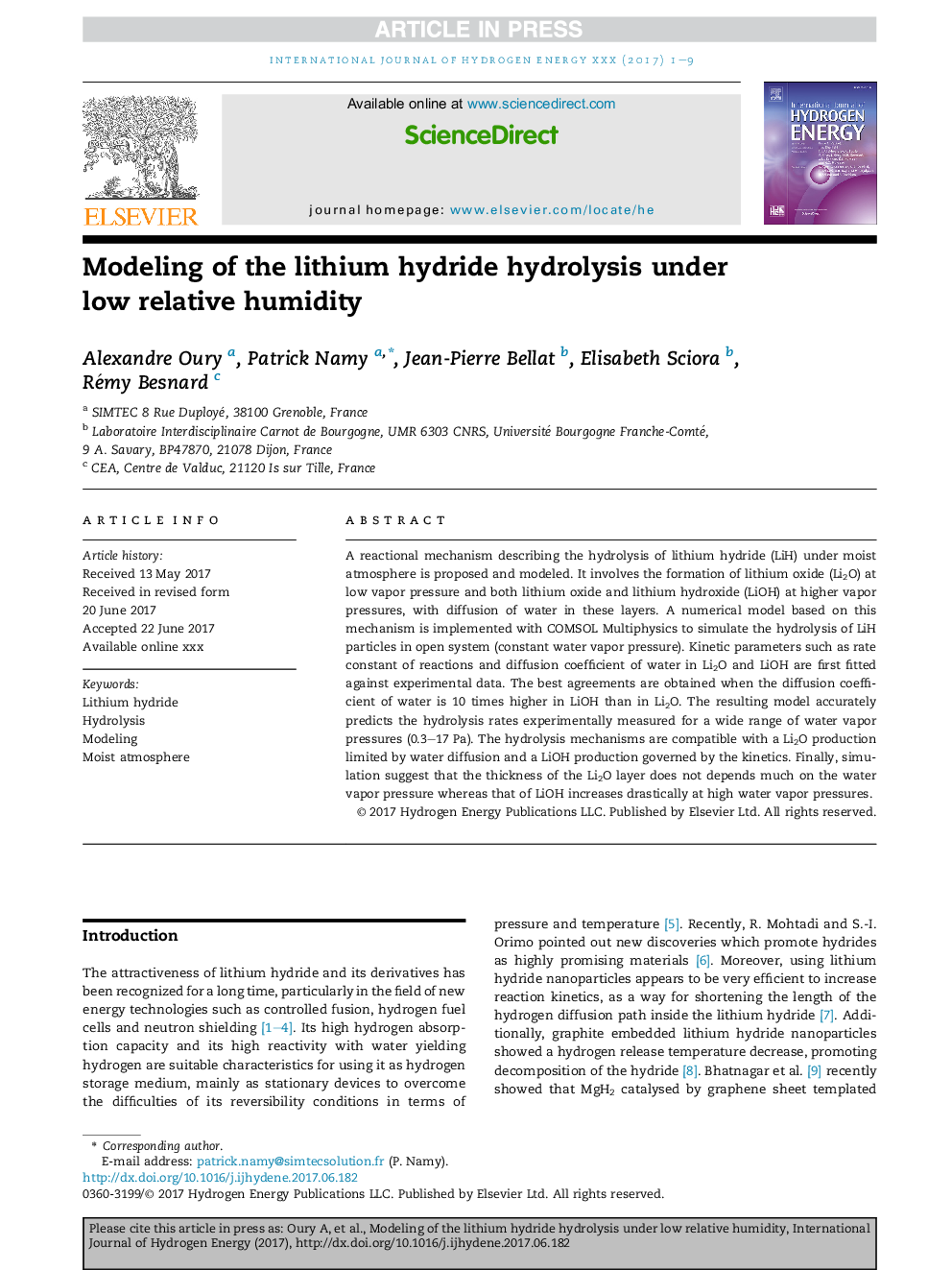| Article ID | Journal | Published Year | Pages | File Type |
|---|---|---|---|---|
| 5145969 | International Journal of Hydrogen Energy | 2017 | 9 Pages |
Abstract
A reactional mechanism describing the hydrolysis of lithium hydride (LiH) under moist atmosphere is proposed and modeled. It involves the formation of lithium oxide (Li2O) at low vapor pressure and both lithium oxide and lithium hydroxide (LiOH) at higher vapor pressures, with diffusion of water in these layers. A numerical model based on this mechanism is implemented with COMSOL Multiphysics to simulate the hydrolysis of LiH particles in open system (constant water vapor pressure). Kinetic parameters such as rate constant of reactions and diffusion coefficient of water in Li2O and LiOH are first fitted against experimental data. The best agreements are obtained when the diffusion coefficient of water is 10 times higher in LiOH than in Li2O. The resulting model accurately predicts the hydrolysis rates experimentally measured for a wide range of water vapor pressures (0.3-17Â Pa). The hydrolysis mechanisms are compatible with a Li2O production limited by water diffusion and a LiOH production governed by the kinetics. Finally, simulation suggest that the thickness of the Li2O layer does not depends much on the water vapor pressure whereas that of LiOH increases drastically at high water vapor pressures.
Keywords
Related Topics
Physical Sciences and Engineering
Chemistry
Electrochemistry
Authors
Alexandre Oury, Patrick Namy, Jean-Pierre Bellat, Elisabeth Sciora, Rémy Besnard,
